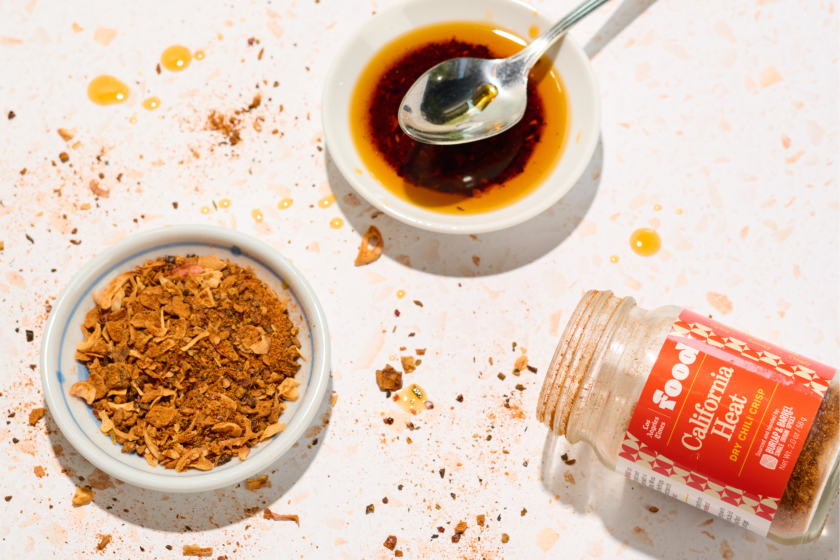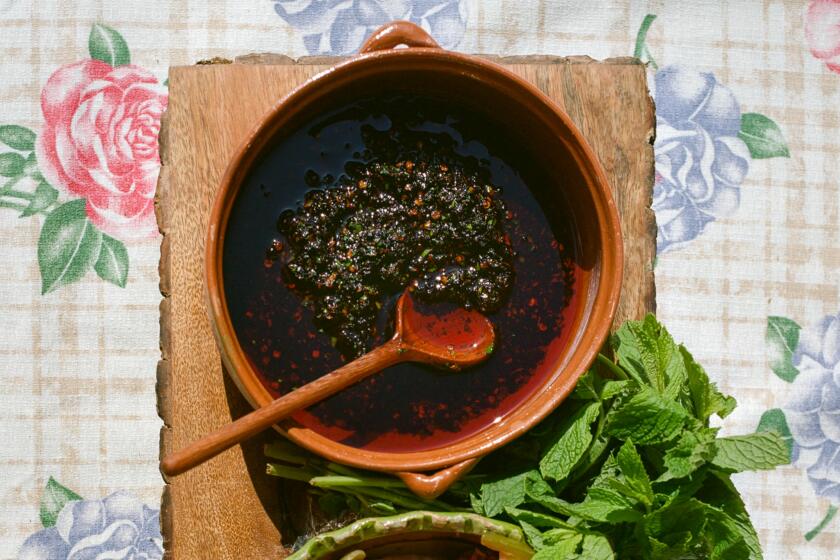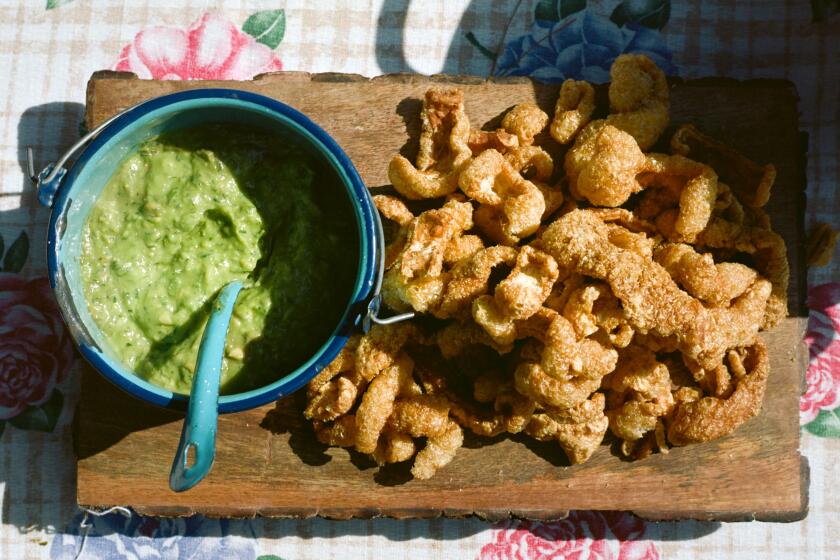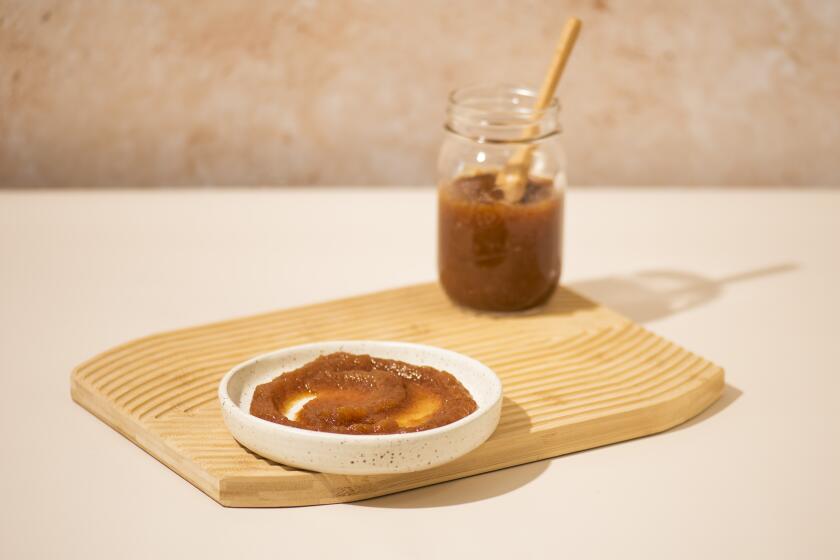Hibiscus syrup
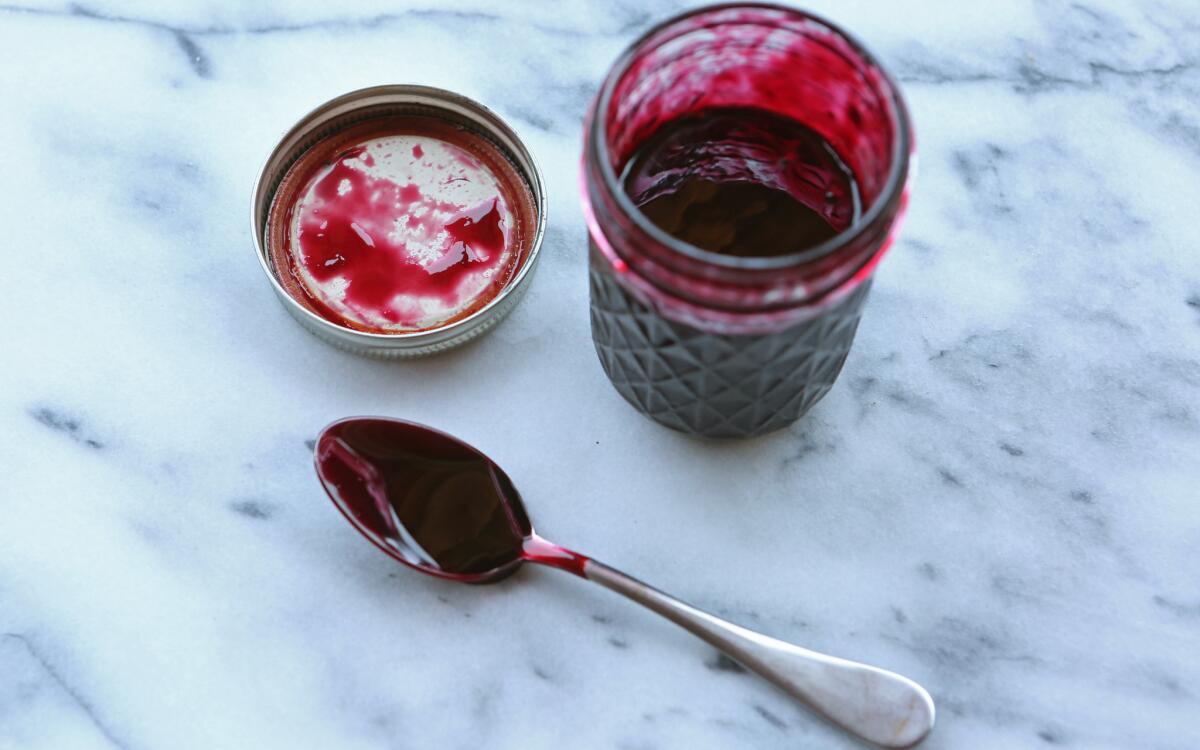
You wouldn’t expect to find an old herbal folk remedy for hypertension to taste so good in a taco, of all things, but vibrant, claret-hued hibiscus does just that. Yes, we’re suggesting you make tacos out of dried flowers. Most people meet hibiscus as a tart infusion when they sip a hot cup of Red Zinger tea or pull a swig of agua fresca de jamaica at their favorite taqueria. Like cranberry, but more nuanced, culinary hibiscus has a fruity-floral brightness and tinge of mustiness. The big flavor and color of hibiscus is so vivid that it shouldn’t be limited to just hot and cold tea.
This bright, bracing beverage isn’t steeped from the large Hawaiian-shirt hibiscus that blooms abundantly in Southern California gardens, but brewed from the calyxes of Hibiscus sabdariffa — more commonly referred to as Thai hibiscus, Jamaican hibiscus, roselle or flor de Jamaica. Slightly tannic on the tongue yet with earthy berry hints, hibiscus cuts the sugariness of sweets, adds pop and color to cocktails and vinaigrettes, and tang to savory dishes.
Equally surprising as the varied ways to use hibiscus in cooking is the worldwide popularity of the culinary herb. I had always thought that jamaica was a Mexican plant, but the flower was brought by Spaniards to the West Indies long before it flourished in Mexico — after all, it is named after Jamaica. In West Africa I was once served a refreshing hibiscus cooler. I knew that the innkeeper was originally from San Diego, so I asked him if he brought the jamaica from the States. He schooled me, relating that he was pouring a bissap tea and that the sour red roselle was native to West Africa and that beverages brewed from Hibiscus sabdariffa were enjoyed all over the African continent.
Shopping for spices at an Indian market, I picked up a cellophane package of dried hibiscus with a Middle Eastern label and asked the clerk if the flowers were used in Indian dishes. His said, yes, in jelly and chutney. In Southeast Asia hibiscus tea is a thirst-quenching antidote to soaring temperatures and spicy food. In Jamaica, where the plant is known as sorrel, fresh hibiscus is brewed with ginger, orange peel and spices. Strained, sweetened and spiked with rum, it’s used to make traditional holiday punch. In nearby Trinidad a popular shandy is blended from beer and hibiscus tea.
Pretty, blush-pink flowers bloom on red wine-stemmed bushes with trident leaves, but it’s not the delicate petals that you want, but the outer sepals that form the protective, pointy calyx around the flower bud. The succulent calyxes can be eaten fresh and the sensation is similar to munching on raw cranberries. In Mexico, I once had an avocado, orange and red onion salad garnished with thin slivers of fresh jamaica that had been freshly plucked from the garden.
When shopping for jamaica, look for purplish-pink whole calyxes that are dry, and yet still slightly supple. Purchased in packages or in bulk from a Mexican market, jamaica tends to be a bit gritty. So it’s good practice to rinse the hibiscus under cool, running water just long enough to flush away any lingering dust, but not so long as to leech out flavor.
Dried hibiscus blossoms soften after a long steep. Slowly simmered in broth and chipotle chile, the calyxes develop a tender pleasant chew and a tangy, spicy quality. Combine them with goat cheese and crisp in a corn tortilla for a surprisingly hearty, deeply flavorful taco. I’m not sure if hibiscus tacos were ever a Mexican dish, but hibiscus blossoms are beginning to pop up on vegan and vegetarian menus as chefs are experimenting more and more with unusual ingredients in an effort to bring new flavors and plant-based “meatiness” to their dishes. I use a little chicken broth to add flavor to the reconstituted calyxes, but vegetable or mushroom broth would make a fine substitution for vegetarians.
Boil hibiscus tea down to thick syrup and many more possibilities come to mind: Whisk a tablespoon into red wine vinaigrette for a color and verve, or make claret-colored margaritas — the sour-sweet mustiness plays well with tequila. Or drizzle atop rose-scented pavolas, where hibiscus adds not only great color, but brings earthy sweetness to mixed berries, and provides an acidic counterbalance to sugary meringues and billows of cream.
Or just make yourself a cup of tea — which you can now happily pair with your tacos.
In a heavy saucepan, combine the water and hibiscus blossoms over high heat and bring to a boil. Reduce the heat to a simmer and cook for 1 minute. Cover and remove from heat and set aside to steep for 1 hour. Strain the tea; discard the hibiscus. Return the tea to the saucepan and stir in the sugar. Boil the tea over medium high heat until the mixture is the consistency of thick syrup and is reduced to 3/4 cup, about 25 minutes. Cool the syrup completely. The syrup will keep, covered and refrigerated, for 5 days.
Get our Cooking newsletter.
Your roundup of inspiring recipes and kitchen tricks.
You may occasionally receive promotional content from the Los Angeles Times.











